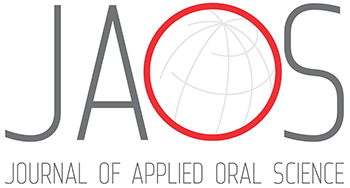Abstract
Ameloblastoma is a highly aggressive odontogenic tumor, and its pathogenesis is associated with many participating genes.
Objective
We aimed to identify and validate new critical genes of conventional ameloblastoma using microarray and bioinformatics analysis.
Methodology
Gene expression microarray and bioinformatic analysis were performed using CHIP H10KA and DAVID software for enrichment. Protein-protein interactions (PPI) were visualized using STRING-Cytoscape with MCODE plugin, followed by Kaplan-Meier and GEPIA analyses that were used for the candidate’s postulation. RT-qPCR and IHC assays were performed to validate the bioinformatic approach.
Results
376 upregulated genes were identified. PPI analysis revealed 14 genes that were validated by Kaplan-Meier and GEPIA resulting in PDGFA and IL2RA as candidate genes. The RT-qPCR analysis confirmed their intense expression. Immunohistochemistry analysis showed that PDGFA expression is parenchyma located.
Conclusion
With bioinformatics methods, we can identify upregulated genes in conventional ameloblastoma, and with RT-qPCR and immunoexpression analysis validate that PDGFA could be a more specific and localized therapeutic target.
Ameloblastoma; Computational Biology; Platelet-derived growth factor Alpha; IL2RA protein, human

 Thumbnail
Thumbnail
 Thumbnail
Thumbnail
 Thumbnail
Thumbnail
 Thumbnail
Thumbnail



